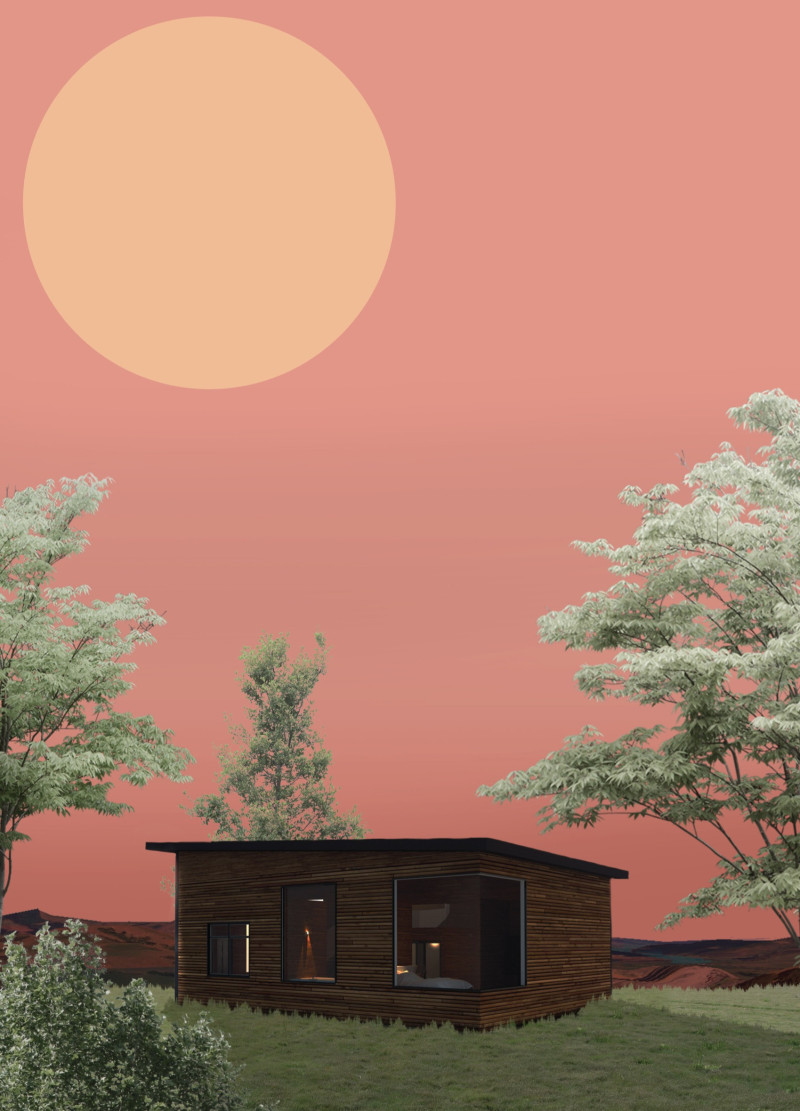5 key facts about this project
Ngāwari Cabin for Two is located in the Earth Energies Sanctuary of New Zealand, showcasing a design that emphasizes a strong connection to nature. It serves as a retreat where occupants can enjoy both privacy and social interaction. The design reflects the Māori concept of "ngāwari," which embodies notions of softness, ease, and simplicity. This guiding principle permeates the architecture, allowing for a tranquil yet engaging experience.
Spatial Organization
The cabin features a layout divided into three distinct areas, each catering to different needs for privacy and socialization. The central part of the cabin merges various functions, encouraging interactions among guests while providing spaces for quiet reflection. This thoughtful organization ensures that users can move between areas designed for connection and those intended for solitude.
Natural Light Integration
Panoramic windows and well-placed skylights are essential aspects of the design, allowing ample natural light to fill the interior. These features create stunning views of the fields, trees, and mountains surrounding the cabin. The interplay of light and shadow throughout the day enhances the living experience, bringing the beauty of the outdoors inside and providing a bright atmosphere.
Interior Features
Comfort and tranquility are key to the overall design. The living area supports morning routines, offering light and views that inspire a connection to the outside. Adjacent to it, the relaxing area has a fireplace, creating a warm and inviting space for evening enjoyment. The bedroom is positioned to maximize scenic views, featuring corner windows that frame the landscape and maintain a strong link to nature.
Unique Details
A standout feature of Ngāwari Cabin for Two is its bathtub, strategically placed to capture sunlight from the skylight. This thoughtful detail turns an ordinary bathing routine into a calming experience. It emphasizes the design's commitment to blending daily life with nature. The cabin succeeds in balancing functionality with an intimate relationship to the surrounding environment.





















































